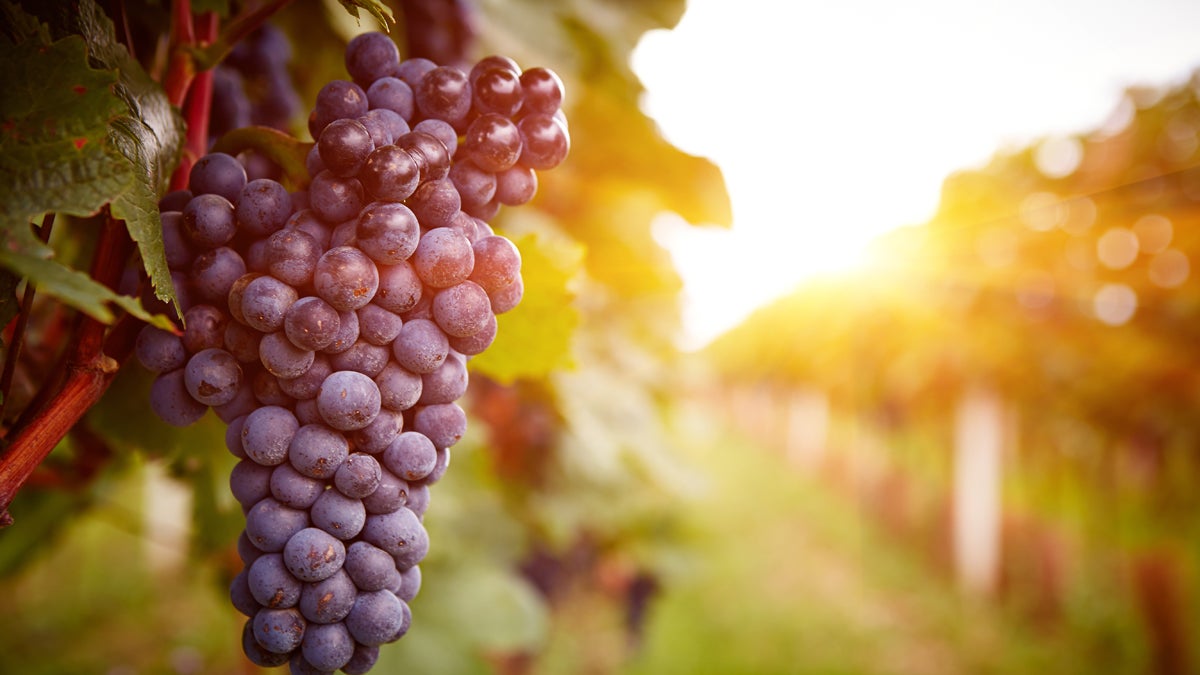Could the next great bottle of wine you buy be from… (gulp)… England?
Listen
Wine is now being described as the canary in the coal mine of agriculture in the era of climate change. (Shutterstock Image: http://shutr.bz/1KEs8za)
Buzzfeed.com reporter/editor Sandra Allen joins us to discuss the troubling news that climate change is bringing to the world of fine wine, and how winemakers are reacting.
Climate change is affecting wine-grape growing agriculture worldwide – this means existing wine regions are depleting and new ones are developing.
Sandra Allen, a BuzzFeed News Reporter and author of the article “How Climate Change Will End Wine As We Know It,” mentions a study from 2013 that estimated that the soil-climate combination best suited for viticulture by 25-73 percent by 2050.
Allen says contributing to the broad range is the tension between wine-makers and climate scientists. They don’t agree on how good or bad things actually are.
“I think in general, people didn’t think it was that bad, which seems pretty human to me,” Allen said.
Besides getting hotter, a shift in climate might cause the weather to become increasingly more erratic, according to Allen. She thinks this unpredictability of weather could be the biggest problem for wine-makers.
“Their whole livelihood is built off of an understanding of how a very particular place works in concert with a very particular weather pattern,” Allen said. “Throwing a wrench into that, in any direction, is really, really tough.”
If wine-makers and grape-growers do believe climate change is affecting their land, they can adapt by planting a new kind of grape that can tolerate the new weather. However, Allen said that is a challenge because of how long it takes to change.
“Wine is really slow moving,” Allen said. “So, if I wanted to change my vineyard over, I can’t just do that overnight or in a single season. That’s going to take years before I’ve converted to a different kind of wine grape.”
Another issue with changing the type of grape is maintaining the wine’s quality. Allen uses Burgundies as an example.
“Burgundy and winemakers know pinot noir [grapes], and for them to just switch to another grape would almost be completely unheard of…it would be like changing cuisines entirely in a region,” Allen said.
Instead of changing grapes, wine producers can—and already have—taken advantage of the new wine regions whose climates are now suitable for producing fine wine.
Allen talked about an instance in Australia, where a larger wine producer purchased wine-grape growing land in Tasmania, the southernmost Australian state, after a drought in 2008. However, bigger wine producers have an advantage over small ones when it comes to investing.
“If you’re a mom and pop shop in France, you can’t necessarily go and buy a vineyard that’s further north and is going to be a better position,” Allen said.
So, what happens to our wine now? Allen suggested stocking up on old-world reds, because they’re going to be the things that are threatened first.
“Those bigger-bodied reds are probably going to be some of the first to go because those are wines that are coming from the hottest wine regions already, so they’re already kind of on the edge in that direction,” Allen said.
What will replace those great wines of southern Europe? Allen says we’re going to see more sparkling wines and aromatic white wines as cooler climates, such as England, become more suitable for wine-making.
WHYY is your source for fact-based, in-depth journalism and information. As a nonprofit organization, we rely on financial support from readers like you. Please give today.



